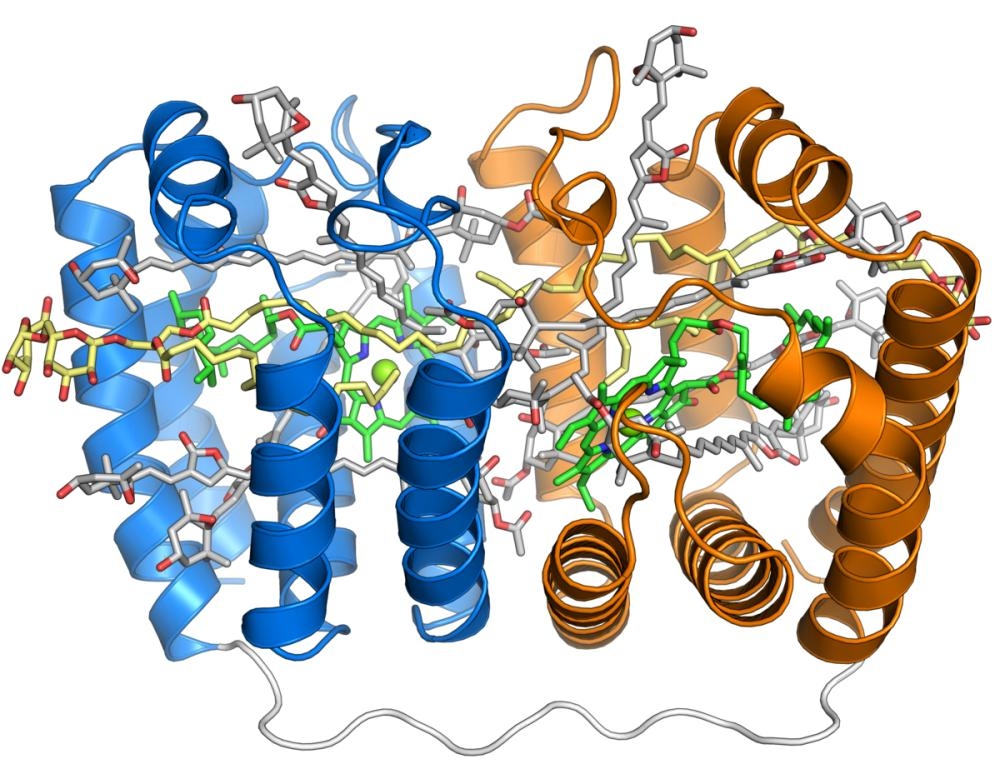PerCP
Peridinin-Chlorophyll-Protein Complex
PerCP (Peridinin-chlorophyll-protein complex) is isolated from Dinophyceae sp. It has an extremely high extinction coefficient, a high quantum efficiency and a large Stokes shift. It is well excited with the Argon laser at 488 nm with its maximum emission peak at 677nm. PerCP protein is commonly used for fluorescent immunolabeling, particularly in applications involving fluorescent-activated cell sorting (FACS). Its cyanine tandem conjugates (such as PerCP-Cy5.5 developed by BD) can be excited with a standard 488 nm laser and emits in the far red at a longer wavelength for multicolor flow cytometric analysis of cells. These multiple emission wavelengths make PerCP- Cyanine conjugates potentially useful fluorochromes for multicolor analysis with FITC, PE and other fluorochromes. PerCP tandem structure may make it more photostable than PerCP alone, which generally photobleaches rapidly with more powerful water-cooled gas lasers. AAT Bioquest offers iFluor® protein labeling dyes that are generally brighter and more photostable than the corresponding cyanine dyes of similar wavelengths. iFluor® protein labeling dyes are superior alternatives to the cyanine dyes.


| Catalog | Size | Price | Quantity |
|---|---|---|---|
| 2540 | 10 mg | Price | |
| 2559 | 1 mg | Price |
Physical properties
| Molecular weight | ~35000 |
| Solvent | Water |
Spectral properties
| Correction factor (280 nm) | 0.22 |
| Extinction coefficient (cm -1 M -1) | 406000 |
| Excitation (nm) | 477 |
| Emission (nm) | 678 |
Storage, safety and handling
| H-phrase | H303, H313, H333 |
| Hazard symbol | XN |
| Intended use | Research Use Only (RUO) |
| R-phrase | R20, R21, R22 |
| Storage | Refrigerated (2-8 °C); Minimize light exposure |
| UNSPSC | 12171501 |
Documents
Contact us
| Telephone | |
| Fax | |
| sales@aatbio.com | |
| International | See distributors |
| Bulk request | Inquire |
| Custom size | Inquire |
| Technical Support | Contact us |
| Request quotation | Request |
| Purchase order | Send to sales@aatbio.com |
| Shipping | Standard overnight for United States, inquire for international |
Page updated on November 5, 2025

